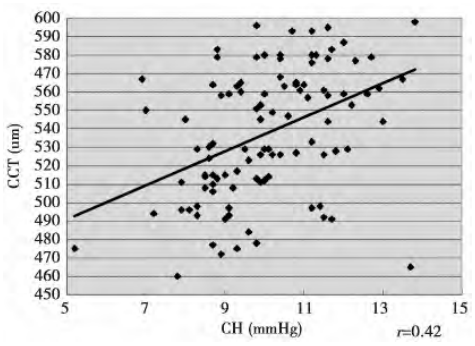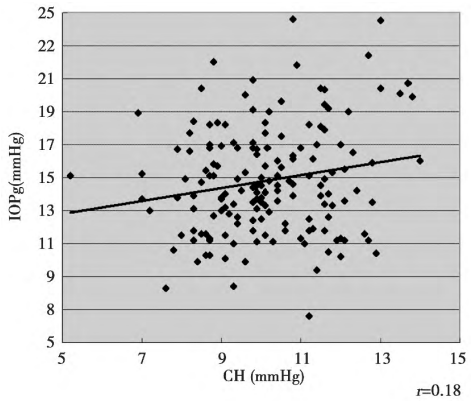1、Luce DA. Determining in vivo biomechanical properties of the cornea with an ocular response analyzer.J Cataract Refract Surg 2005;31(1):156-162.
2、Liu J, .Roberts CJ..Influence of corneal biomechanical properties on intraocular pressure measurement; quantitative analysis.J Cataract Refract Surg 2005;31 (1):146 -155.
3、Pepose JS,.Feigenbaum SK,.Qazi MA,et al..Changes incorneal biomechanics and intraocular pressure following LASIK using static, dynamic, and noncontact tonometry.Am J Ophthalmol 2007;143(1):39-47.
4、Congdon NG,.Broman AT,.Bandeen-Roche K,et al.Central corneal thickness and corneal hysteresis associated with glaucoma damage.Am J Ophthalmol 2006;141 (5):868-875.
5、Del Buey MA,.Cristóbal JA,.Ascaso FJ,et al.Biomechanical properties of the cornea in Fuchs′ corneal dystrophy.Invest Ophthalmol Vis Sci 2009;50(7):3199-3202.
6、Ortiz D,Pinero D,Shabayek MH,et al.Corneal biomechanical properties in normal, post -laser in situ keratomileusis,and keratoconic eyes.J Cataract Refract Surg 2007; 33(8):1371-1375
7、Goldich Y,Barkana Y,Gerber Y,et al.Effect of diabetes mellitus on biomechanical parameters of the cornea. J Cataract Refract Surg 2009;35(4):715-719.
8、Kamiya K, Shimizu K, Ohmoto F.Effect of aging on corneal biomechanical parameters using the ocular response analyzer. J Refract Surg 2009;25(10):888-893.
9、Fontes BM, Ambrósio R Jr, Alonso RS, et al.Corneal biomechanical metrics in eyes with refraction of -19.00 to+9.00 D in healthy Brazilian patients.J Refract Surg
2008;24(9):941-945.
10、Kamiya K, Hagishima M, Fujimura F, et al. Factors affecting corneal hysteresis in normal eyes.Graefes Arch Clin Exp Ophthalmol 2008;246(10):1491-1494.
11、Lam A, Chen D, Chiu R, et al. Comparison of IOP measurements between ORA and GAT in normal Chinese.Optom Vis Sci 2007;84(9):909-914.
12、Shen M, Fan F, Xue A, et al. Biomechanical properties of the cornea in high myopia. Vision Res 2008;48(21):2167-2171.
13、Xu S,Xu A,Tao A,et al.Corneal biomechanical properties and intraocular pressure in high myopic anisometropia.Eye & Contact Lens 2010;36(4):204-209.
14、Leite MT, Alencar LM, Gore C, et al. Comparison of corneal biomechanical properties between healthy blacks and whites using the Ocular Response Analyzer. Am J
Ophthalmol 2010;150(2):163-168.
15、Daxer A, Misof K, Grabner B, et al. Collagen fibrils in the human corneal stroma: structure and aging.Invest Ophthalmol Vis Sci 1998;39(3):644-648.
16、Shah S, Laiquzzaman M, Bhojwani R, et al. Assessment of the biomechanical properties of the cornea with the ocular response analyzer in normal and keratoconic eyes. Invest Ophthalmol Vis Sci 2007;48(7):3026-3031.
17、Gatinel D, Chaabouni S, Adam PA, et al. Corneal hysteresis,resistance factor, topography, and pachymetry after corneal lamellar flap. J Refract Surg 2007;23(1):76-84.
18、Fam HB, How AC, Baskaran M, et al.Central corneal thickness and its relationship to myopia in Chinese adults.Br J Ophthalmol 2006;90(12):1451-1253.
19、Chang SW, Tsai IL, Hu FR, et al.The cornea in young myopic adults. Br J Ophthalmol 2001;85(8):916-920.
20、Cho P,.Lam C..Factors affecting the central corneal thickness of Hong Kong-Chinese. Cur Eye Res 1999;18(5):368-374.
21、Gentle A, Liu Y, Martin JE, et al. Collagen gene expression and the altered accumulation of scleral collagen during the development of high myopia. J Biol Chem
2003;278(19):16587-1694.
22、Grossniklaus HE, Green WR. Pathologic findings in pathologic myopia. Retina 1992;12(2):127-133.
23、Strobbe E, Cellini M, Barbaresi U, et al. Influence of age and gender on corneal biomechanical properties in a healthy Italian population. Cornea 2014;33(9):968-972.
24、Hwang HS,Park SK,Kim MS. The biomechanical properties of the cornea and anterior segment parameters.See comment in PubMed Commons below BMC Ophthalmol
2013;13:49.
25、Chang PY,Chang SW,Wang JY.Assessment of corneal biomechanical properties and intraocular pressure with the Ocular Response Analyzer in childhood myopia. Br J
Ophthalmol 2010;94(7):877-881.
26、Narayanaswamy A, Chung RS, Wu RY, Park Jet al.Determinants of corneal biomechanical properties in an adult Chinese population. Ophthalmology 2011;118(7):1253-1259.
27、Moreno-Monta觡és J, Maldonado MJ, García N, et al.Reproducibility and clinical relevance of the ocular response analyzer in nonoperated eyes: corneal biomechanical and tonometric implications. Invest Ophthalmol Vis Sci 2008;49(3):968-974.
28、Wasielica-Poslednik J, Berisha F, Aliyeva S, Pfeiffer N,Hoffmann EM. Reproducibility of ocular response analyzer measurements and their correlation with central corneal thickness. Graefes Arch Clin Exp Ophthalmol 2010;248(11):1617-1622.
29、Shen M, Wang J, Qu J,et al. Diurnal variation of ocular hysteresis, corneal thickness, and intraocular pressure.Optom Vis Sci 2008;85(12):1185-1192.
30、Kozobolis V, Sideroudi H, Giarmoukakis A, et al.Corneal biomechanical properties and anterior segment parameters in forme fruste keratoconus. Eur J Ophthalmol 2012;22(6):920-930.
31、Frings A, Linke SJ, Bauer EL, et al. Effects of laser in situ keratomileusis (LASIK) on corneal biomechanical measurements with the Corvis ST tonometer. Clin Ophthalmol 2015;9:305-311.
32、Chen MC, Lee N, Bourla N, et al. Corneal biomechanical measurements before and after laser in situ keratomileusis.J Cataract Refract Surg. 2008;34:1886 -1891.






